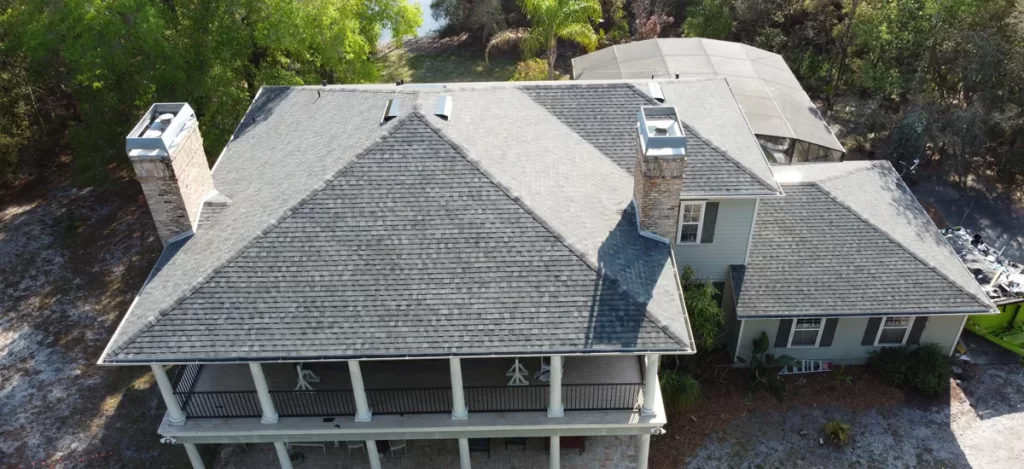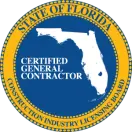Common Roof Repairs Needed After Severe Storms
Severe storms can leave behind a trail of destruction, and your roof is often the first line of defense that bears the brunt of the impact. After the storm clouds clear and the damage is assessed, homeowners frequently find that their roofs require urgent attention to prevent further deterioration. Understanding the common roof repairs needed after severe storms can help you take swift action to protect your home and ensure the longevity of your roof.
Understanding the Impact of Severe Storms on Roofs
Roofs are designed to withstand various weather conditions, but severe storms can push these structures to their limits. The combination of high winds, heavy rainfall, hail, and debris can lead to significant damage, often in ways that are not immediately visible. Understanding the anatomy of a roof and the forces at play during a storm is crucial for grasping why certain types of damage occur and what repairs may be necessary.
The Anatomy of a Roof: Why Storms Cause Damage
A typical roof is a complex structure composed of several layers, each serving a specific purpose. The outermost layer, usually shingles or tiles, acts as a protective barrier against the elements. Beneath this layer lies the underlayment, which provides additional waterproofing, and the roof decking, which serves as the foundation for the entire structure. When a storm hits, each of these layers is vulnerable to different types of damage, depending on the intensity and nature of the storm.
For example, high winds can lift and displace shingles, exposing the underlayment and decking to moisture. Hailstones can puncture shingles and damage the underlying layers, while heavy rain can exploit any existing weaknesses in the roof, leading to leaks and water infiltration. Understanding these dynamics helps explain why roof repairs are often necessary after severe weather events.
Types of Storms That Commonly Affect Roofs
Different types of storms pose unique threats to your roof. Thunderstorms, with their powerful winds and lightning, can cause shingles to become dislodged or damaged. Hailstorms are notorious for leaving behind a trail of dents and punctures, while hurricanes and tornadoes can lead to catastrophic damage, ripping off entire sections of roofing. Even winter storms, with their heavy snowfall and ice accumulation, can cause roof sagging or ice dams, leading to water leaks and structural damage.
Common Roof Damages Caused by Severe Storms
After a severe storm, it’s essential to assess your roof for damage, even if it appears to be intact from the ground. Some of the most common types of roof damage that occur during storms include shingle damage, leaks, structural damage, and issues with gutters and flashing. Each of these requires specific repairs to restore the roof’s integrity and prevent further problems.
Shingle Damage: Cracks, Curls, and Missing Pieces
Shingles are the first line of defense against the elements, and they often take the brunt of storm damage. High winds can lift shingles from the roof surface, causing them to crack, curl, or even blow off entirely. Missing shingles expose the underlying layers of the roof, increasing the risk of leaks and water damage. Cracked or curled shingles can also create gaps that allow water to seep into the roof structure, leading to more extensive damage over time.
Leaks and Water Infiltration
One of the most common and concerning issues after a storm is roof leaks. Water infiltration can occur when shingles are damaged, flashing is compromised, or the roof deck is exposed. Once water penetrates the roof’s protective layers, it can lead to rot, mold growth, and even structural damage if not addressed promptly. Leaks are often difficult to detect early on, as the water may travel along the roof structure before becoming visible inside the home.
Structural Damage to Roof Decking
In severe storms, especially those involving high winds or falling debris, the roof decking itself can suffer structural damage. The decking is the foundation of the roof, and any compromise here can affect the overall stability of the roof. Signs of structural damage may include sagging areas, cracks in the ceiling, or visible damage to the roof surface. Repairing structural damage typically requires replacing the affected sections of the decking, which can be a complex and costly process.
Gutter and Downspout Issues
Gutters and downspouts are crucial for directing water away from your home, but they can be damaged during a storm. High winds and flying debris can dent, dislodge, or clog gutters, preventing them from functioning correctly. Damaged gutters can lead to water pooling on the roof or around the foundation of your home, causing further issues such as leaks or basement flooding.
Damage to Roof Flashing
Roof flashing, the material used to seal joints and prevent water from entering the roof structure, is particularly vulnerable during storms. Flashing is typically installed around chimneys, vents, skylights, and other roof penetrations. High winds or heavy rainfall can loosen or dislodge flashing, creating gaps that allow water to seep into the roof. Repairing or replacing damaged flashing is essential to maintain the roof’s watertight integrity.
Wind Damage: Uplifted Shingles and Roof Panels
Wind damage is one of the most common issues following a severe storm. High winds can create uplift pressure on shingles and roof panels, causing them to lift or separate from the roof deck. This not only compromises the roof’s protective barrier but also increases the risk of further damage from subsequent storms. Wind-damaged roofs may require extensive repairs, including re-securing shingles, replacing damaged sections, and reinforcing the roof structure.
Hail Damage: Pockmarks and Dents
Hailstorms can be particularly destructive to roofs, leaving behind pockmarks, dents, and punctures in shingles and other roofing materials. While hail damage might seem minor at first glance, these small dents can weaken shingles and make them more susceptible to future damage. In severe cases, hail can puncture the roof’s protective layers, leading to leaks and water damage. Repairing hail damage often involves replacing the affected shingles or sections of the roof.
Common Roof Repairs Needed After Severe Storms
After assessing the damage caused by a severe storm, it’s time to address the necessary repairs. The most common roof repairs following a storm include replacing damaged shingles, fixing leaks, repairing structural damage, and addressing issues with gutters and flashing. Taking swift action to complete these repairs can prevent further deterioration and extend the lifespan of your roof.
Replacing Damaged Shingles
Shingle replacement is one of the most frequent repairs needed after a storm. Damaged, missing, or loose shingles must be replaced to restore the roof’s protective barrier. Depending on the extent of the damage, this may involve replacing individual shingles or, in more severe cases, entire sections of the roof. Ensuring that new shingles are properly installed and matched to the existing ones is crucial for maintaining the roof’s appearance and functionality.
Fixing Roof Leaks and Water Damage
Roof leaks require immediate attention to prevent water from causing further damage to the roof structure and the interior of your home. Repairing leaks typically involves sealing or replacing the affected area, whether it’s shingles, flashing, or the roof deck itself. In cases where water damage has already occurred, additional repairs such as replacing damaged insulation, drywall, or roofing materials may be necessary.
Repairing Structural Damage
If the storm has caused structural damage to your roof, such as sagging or broken decking, these issues must be addressed promptly to ensure the roof’s stability. Structural repairs often involve replacing damaged sections of the roof deck, reinforcing the roof’s support system, and ensuring that the roof can safely bear its load. Due to the complexity of these repairs, it’s essential to hire a professional roofing contractor with experience in structural repairs.
Gutter and Downspout Repairs
Restoring the functionality of gutters and downspouts is critical for preventing water from accumulating on the roof or around your home’s foundation. Repairs may involve reattaching loose gutters, replacing damaged sections, or clearing debris that has caused blockages. In some cases, it may be necessary to install new gutters or upgrade to a more durable system to withstand future storms.
Flashing Repairs and Replacement
Damaged or missing flashing should be repaired or replaced as soon as possible to maintain the roof’s watertight seal. This process typically involves removing the old flashing, installing new materials, and sealing the area to prevent leaks. Properly installed flashing is essential for protecting vulnerable areas of the roof, such as chimneys, vents, and skylights, from water intrusion.
Addressing Wind Damage: Securing Uplifted Shingles
Wind-damaged roofs often require the re-securing of uplifted shingles or panels. This repair involves inspecting the affected areas, reattaching any loose materials, and reinforcing the roof to prevent future damage. In cases where the wind has caused extensive damage, it may be necessary to replace large sections of the roof to restore its integrity.
Hail Damage Repair: Shingle Replacement and Siding Repairs
Hail damage repairs often involve replacing damaged shingles and addressing any associated issues, such as dents in metal roofing or damage to siding. It’s essential to thoroughly inspect the roof after a hailstorm, as even minor dents can weaken the roof’s materials over time. In some cases, additional repairs to the roof’s underlayment or structure may be required if the hail has caused significant damage.
Identifying Roof Damage After a Storm
Identifying roof damage after a storm is the first step in ensuring your home’s safety and preventing further issues. While some damage is visible from the ground, other issues may require a closer inspection or the expertise of a professional roofer.
Signs of Visible Damage
After a storm, walk around your property and look for visible signs of roof damage. These may include missing or damaged shingles, dents in metal roofing, broken gutters, or visible gaps in flashing. Also, check the attic for signs of leaks or water stains, as these can indicate roof damage that isn’t immediately apparent from the exterior.
Using a Professional Roof Inspection
Even if your roof appears to be intact, it’s wise to schedule a professional roof inspection after a severe storm. A qualified roofer can identify less obvious damage, such as small cracks in shingles, loosened flashing, or minor structural issues. A thorough inspection ensures that all damage is documented and addressed before it leads to more significant problems.
The Importance of Documenting Damage
If you plan to file an insurance claim for storm damage, documenting the damage is crucial. Take photos of all visible damage, both inside and outside your home, and keep records of any repairs you’ve already made. A professional roofer can also provide a detailed inspection report that can support your insurance claim and help ensure you receive adequate compensation for the repairs.
The Cost of Roof Repairs After Severe Storms
The cost of roof repairs after a storm can vary widely depending on the extent of the damage, the materials used, and labor costs. Understanding the factors that influence repair costs and the potential savings from timely repairs can help you manage expenses and make informed decisions.
Factors Influencing Repair Costs
Several factors can affect the cost of roof repairs after a storm. These include the type and extent of the damage, the materials needed for repairs, the complexity of the repair process, and local labor rates. For example, replacing a few damaged shingles may be relatively inexpensive, while repairing structural damage or replacing large sections of the roof can be more costly.
Average Cost Estimates for Common Repairs
On average, roof repairs after a storm can range from a few hundred dollars for minor repairs to several thousand dollars for more extensive damage. For example, replacing a few shingles might cost between $200 and $500, while repairing a significant leak or structural damage could cost $1,000 to $5,000 or more. Knowing these estimates can help you budget for repairs and avoid unexpected expenses.
The Value of Timely Repairs in Cost Savings
While the cost of roof repairs may seem daunting, delaying repairs can lead to even more significant expenses down the road. For example, a small leak that goes unrepaired can lead to water damage, mold growth, and structural issues that are far more costly to fix. Investing in timely repairs not only protects your home but can also save you money in the long run by preventing more extensive damage.
Preventative Measures to Minimize Roof Damage
While it’s impossible to prevent all storm damage, there are steps you can take to minimize the impact on your roof and reduce the need for repairs. Regular maintenance, upgrading materials, and ensuring proper installation can all contribute to a more resilient roof.
Routine Roof Maintenance
Regular roof maintenance is essential for identifying and addressing minor issues before they become major problems. This includes inspecting your roof at least twice a year, cleaning gutters, and repairing any damage as soon as it’s detected. By keeping your roof in good condition, you can reduce the risk of severe damage during storms and extend the lifespan of your roof.
Installing Impact-Resistant Shingles
Upgrading to impact-resistant shingles is a smart investment if you live in an area prone to severe storms. These shingles are designed to withstand high winds, hail, and flying debris, reducing the likelihood of damage during a storm. While they may cost more upfront, the long-term benefits of reduced repair costs and increased durability make them a worthwhile investment.
Ensuring Proper Roof Ventilation
Proper roof ventilation is essential for preventing moisture buildup and maintaining the integrity of your roof. During a storm, poor ventilation can exacerbate issues like ice dams and condensation, leading to water damage and mold growth. Ensuring that your roof has adequate ventilation can help prevent these problems and improve the overall performance of your roof.
Strengthening Roof Flashing
Roof flashing is a critical component in preventing water intrusion, especially around vulnerable areas like chimneys, vents, and skylights. Strengthening your flashing with durable materials and proper installation techniques can help protect your roof from leaks during severe storms. Regularly inspecting and maintaining flashing is also essential for ensuring its effectiveness.
Maintaining Gutters and Downspouts
Well-maintained gutters and downspouts are vital for directing water away from your roof and foundation. Clogged or damaged gutters can cause water to pool on your roof, increasing the risk of leaks and structural damage. Regularly cleaning and inspecting your gutters, and making any necessary repairs, can help prevent these issues and protect your roof during storms.
Filing an Insurance Claim for Storm Damage
If your roof has suffered storm damage, filing an insurance claim can help cover the cost of repairs. Understanding the claims process and working with your insurance company can ensure that you receive fair compensation for the damage.
Understanding Your Insurance Policy
Before filing a claim, review your homeowner’s insurance policy to understand what is covered and what exclusions may apply. Most policies cover storm damage, but the specifics can vary depending on your provider and the terms of your policy. Understanding your coverage can help you navigate the claims process and avoid any surprises.
Steps to Take When Filing a Claim
When filing an insurance claim for storm damage, it’s essential to act quickly and follow the necessary steps. Start by documenting the damage with photos and written descriptions. Contact your insurance company to report the damage and initiate the claims process. A professional roof inspection can also provide valuable documentation to support your claim.
Working with Insurance Adjusters
Once you’ve filed a claim, an insurance adjuster will likely visit your home to assess the damage. Be sure to provide them with all the documentation you’ve collected and any estimates from roofing contractors. It’s also a good idea to be present during the inspection to answer any questions and ensure that all damage is noted. Working cooperatively with the adjuster can help facilitate a smooth claims process and ensure that you receive the compensation you need for repairs.
Why Professional Roof Repair is Essential After Storms
While some homeowners may be tempted to tackle roof repairs themselves, professional repair services are essential after a storm. Hiring a qualified roofer ensures that repairs are done correctly, safely, and in compliance with local building codes.
The Risks of DIY Roof Repairs
DIY roof repairs can be risky for several reasons. Without the proper knowledge and tools, you may not fully address the damage, leading to further issues down the road. Additionally, working on a roof can be dangerous, especially if the structure is compromised or the weather is unfavorable. Professional roofers have the experience, equipment, and safety training needed to complete repairs safely and effectively.
Advantages of Hiring a Professional Roofer
Hiring a professional roofer offers several advantages, including expertise in identifying and repairing storm damage, access to high-quality materials, and knowledge of local building codes and regulations. A professional roofer can also provide a warranty on their work, giving you peace of mind that your roof is protected against future issues.
How to Choose a Reliable Roofing Contractor
When selecting a roofing contractor, it’s essential to choose someone with a solid reputation, proper licensing, and insurance coverage. Look for contractors with experience in storm damage repairs and ask for references from previous clients. A reliable contractor will provide a detailed estimate, explain the repair process, and communicate clearly throughout the project.
The Long-Term Impact of Ignoring Roof Repairs
Ignoring roof repairs after a storm can lead to significant long-term consequences, including compromised structural integrity, increased energy costs, and the risk of mold and mildew growth.
Compromised Structural Integrity
One of the most serious risks of delaying roof repairs is the potential for compromised structural integrity. Damage to the roof deck, support beams, or other critical components can weaken the entire structure, increasing the risk of collapse or further damage during future storms.
Increased Energy Costs Due to Poor Insulation
A damaged roof can also lead to increased energy costs. Leaks, missing shingles, and other issues can allow warm or cool air to escape, forcing your HVAC system to work harder to maintain a comfortable temperature. Repairing your roof promptly can help maintain proper insulation and reduce your energy bills.
Risk of Mold and Mildew Growth
Water infiltration from a damaged roof can create the ideal conditions for mold and mildew growth. These fungi can spread quickly, causing health issues for your family and further damaging your home’s interior. Addressing roof leaks and water damage promptly can prevent mold growth and protect your home’s air quality.
Conclusion: Protecting Your Home from Future Storm Damage
Severe storms are an inevitable part of life in many regions, but by understanding the common roof repairs needed after such events, you can take proactive steps to protect your home. Regular roof inspections, timely repairs, and preventative measures can all contribute to a more resilient roof that stands up to the challenges of severe weather. Investing in professional roof care not only safeguards your home but also ensures that your roof remains in top condition for years to come.
FAQs
How can I tell if my roof has storm damage?
Look for visible signs such as missing or damaged shingles, dents in metal roofing, broken gutters, or water stains in the attic. A professional inspection is recommended to identify less obvious damage.
What should I do if I find roof damage after a storm?
Document the damage with photos and written descriptions, contact your insurance company, and schedule a professional roof inspection to assess the extent of the damage and get an estimate for repairs.
How much do roof repairs typically cost after a storm?
The cost of roof repairs can vary widely depending on the damage. Minor repairs may cost a few hundred dollars, while more extensive damage can run into the thousands. Timely repairs can help prevent further damage and additional costs.
Can I repair my roof myself after a storm?
While some minor repairs might be manageable for experienced DIYers, it’s generally safer and more effective to hire a professional roofer, especially for significant damage or structural issues.
Will my homeowner’s insurance cover roof repairs after a storm?
Most homeowner’s insurance policies cover storm damage, but coverage can vary. Review your policy and consult with your insurance company to understand what is covered and any steps you need to take to file a claim.
How can I prevent roof damage in future storms?
Regular maintenance, installing impact-resistant shingles, ensuring proper ventilation, and strengthening flashing are all effective ways to reduce the risk of roof damage in future storms.














